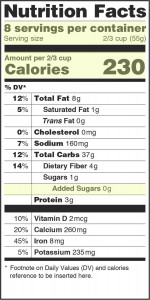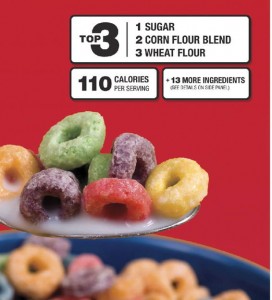FDA proposes new labeling requirements for Sugar and Sweeteners
Two perspective articles were published today in the prestigious New England Journal of Medicine on the FDA’s proposed new food labeling guidelines. The FDA is an organization that is criticized frequently and rarely applauded for its slow but steady progress in protecting consumers.
David Kessler, the former FDA commissioner that helped create the current Nutrition Facts Label, stated that “reducing the incidence of diet-related disease and associated mortality was one of the most significant contributions we could make to public health. Our goal was… to give people accurate, easy-to-read information that encouraged them to make healthier food choices.”
The original label fell short of that goal, but it was a starting point. Ideally, the FDA should have continued to improve its labeling requirements to protect consumers from the dishonest tactics of food manufacturers.
Some twenty-five years have passed, and the FDA is finally ready to take its next “baby step”, the very first revision to the food label since its creation. But the update is far from dramatic, and the changes may even be hard to detect (so I have taken the liberty of highlighting them in yellow in the photo, although the actual labels will be plain black and white). A line will be added to list added sugars separately from total sugars. And the serving sizes will be revised to more accurately reflect what people actually eat.
These small changes are specifically aimed at the obesity epidemic. Kessler says that “over the past decade, we have learned a great deal about the reinforcing properties of sugar and how they promote overeating, and we know that people tend to consume calorie-rich, sugary products at the expense of nutrient-dense foods.”
Indeed, twenty-five years have taught us more than just “added sugars lead to obesity”. In this proverbial cat-and-mouse game, the manufacturers have become big, fat rats under the nose of a sleepy cat.
Manufacturers still use the following tricks to avoid telling consumer’s the truth about its “food” products that rarely contain more than low-cost, nutritionally-void substances and toxic additives:
Instead of real ingredients like fruits and vegetables, which are costlier and more “problematic” due to the fact that real food cannot be held in a warehouse for years, manufacturers use dried up, pulverized grass seeds, also known as grains, and then fortify them with synthetic vitamins, creating the illusion of a nutritious product for a fraction of the cost. Wonderful!
Manufacturers fill their products with addictive sugar and artificial sweeteners, and then label them as “low fat”.
Tiny type and complex names are used to confuse the consumer. The FDA currently requires that ingredients be listed in descending order by weight. But rather than listing “sugar” as the #1 ingredient, sneeky manufacturers add several different sweeteners, including fructose, corn syrup, aspartame, sucralose, dextrose, maltodextrin and brown rice syrup, which can be listed separately further down the list. Brilliant!
According to Peter Williams in the journal “Nutrition Reviews”, consumers do trust the health claims that manufacturers make on the front of their packaging. Products that contained a health claim (such as “low fat” or “lower sugar”) were considered “healthier” than foods without such claims (3), yet many of these items actually contain no real food at all, and could fairly be called pure junk.
Kessler believes that the FDA should require manufacturers to list the top three ingredients, the number of additional ingredients and the calorie count on the front of each package in large bold letters. (See image.) He also believes that forcing these labels onto the fronts of packages will have the double-whammy effect of embarrassing the manufacturers into putting real food into their packages. I agree on both counts! Too bad Kessler is no longer in charge of the FDA.
If it were me running the FDA, I would implement Kessler’s ideas, and I’d go even further. I am decidedly less forgiving of the manufacturers that harm consumers with addictive, toxic ingredients sold as food. You can see my version of the new proposed food label at the top of this page.
References:
- David A. Kessler, M.D. New England Journal of Medicine, July 17, 2014; 371:193-195, DOI: 10.1056/NEJMp1402971
- Allison C. Sylvetsky, Ph.D. et al. New England Journal of Medicine, July 17, 2014; 371:195-198, DOI: 10.1056/NEJMp1404899
- Williams Peter. Consumer understanding and use of health claims for foods. Nutrition Reviews, July 2005, Volume 63, Issue 7, pages 256–264




